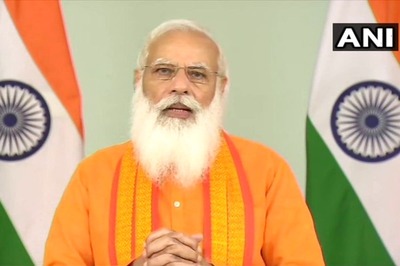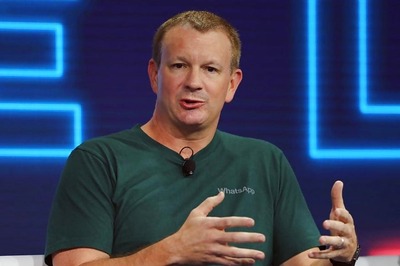
views
New Delhi: India's GDP growth likely languished around its lowest in three years in the quarter that ended in June, offering no respite for Prime Minister Manmohan Singh as he struggles to escape from a series of political scandals that have paralysed his economic agenda.
Weak demand in the West has hit exports, but the heaviest toll on the economy is from overspending and a lack of reforms at home - a point made by both the Reserve Bank of India and ratings agencies Fitch and Standard & Poor's, who threaten to downgrade India's sovereign ratings to junk.
A Reuters poll of 38 economists produced a median forecast of 5.3 per cent year-on-year GDP growth for the April-June quarter, unchanged from January-March, which was the slowest growth rate since the same quarter of 2009. The data is due to be released at 0530 GMT on Friday.
If the forecast is correct it will mean more bad news for the government, which is embroiled in a row with the main opposition Bharatiya Janata Party (BJP) over sweetheart coal deals. The state auditor has questioned the deals, and the BJP has refused to allow parliament to function until Singh quits.
A raft of bills, including a number of important economic reforms, is now bogged down in the legislature. The furore has deepened the sense of dysfunction in Indian politics that has already stalled bold measures to cut government spending on costly fuel subsidies and help bring down high inflation. Poor monsoon rains have added to the economic gloom.
"Below 5 per cent growth will be a game changer," said Manish Wadhawan, managing director and head of rates at HSBC in Mumbai.
"For a print below 5 per cent you would need to see a deceleration in manufacturing, agriculture and also services, which would be really massive as that will mean the last bastion of growth has also stalled," he added.
Industrial output contracted in June and the country is running a wide current account deficit that has driven the rupee to record lows.
With gridlock in both parliament and the government putting big reforms out of reach for now, finance ministry officials are focused on smaller measures, such as speeding up delayed infrastructure projects, to help boost the economy in the second half of the fiscal year, which began in April.
They still foresee annual economic growth of around 6.5 per cent for 2012/2013. However, for the quarter ending in June, the ministry expects Friday's data to show the economy grew between 5 per cent and 5.5 per cent, two ministry officials told Reuters.
One of the officials said Friday's data may not reflect the full impact of the drought in major crop-growing states. The provisional quarterly numbers could be later revised up or down by up to 0.5 per cent depending on the actual farm output, final figures on industrial output and trade data, he said.
The RBI meets on September 17 to review monetary policy, and bond yields rallied this week on expectations a low growth reading would nudge the bank to reduce interest rates, some of the highest among major economies.
But only last week the RBI said fighting stubbornly high inflation remained the cornerstone of its monetary policy, and said lower interest rates alone would not jumpstart the economy.
The growth rate in the first quarter of India's fiscal year was initially reported as the weakest since the same quarter of 2003. But India's Ministry of Statistics has released a new series of quarterly GDP growth estimates, which include a sharp downward revision of growth for the January-March quarter of 2009 to 3.5 per cent from 5.9 per cent.
Singh's economic advisory panel this month cut its forecast to 6.7 per cent for economic growth in the year to next March, down from a previous forecast of 7.5-8 per cent. The RBI predicts growth of 6.5 per cent in the same period.


















Comments
0 comment